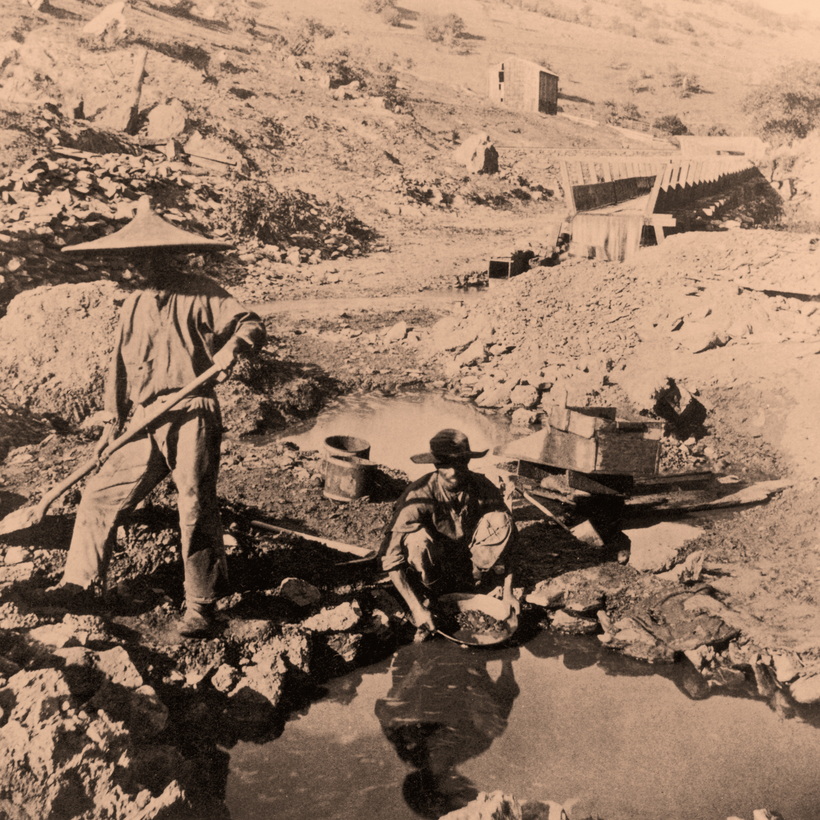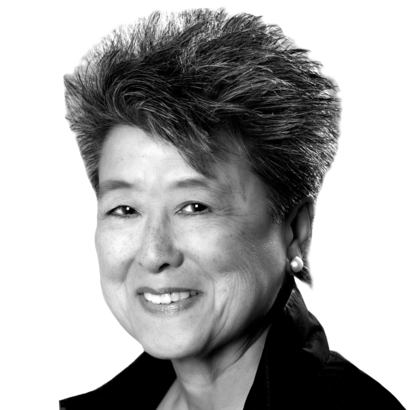Beneath the media-polished statements of pundits, power brokers, and many of this year’s G7 leaders on the subject of China lies this question: Are the Chinese a threat to white, Anglo-American countries?
Though it reflects this millennium’s intensifying anxieties around China, this sentiment actually dates back to the 1800s, when it was popularly known as “the Chinese Question.” In her book of the same name, the American historian Mae Ngai revisits the question’s origins in the 19th-century gold rushes that spanned the U.S., Australia, and South Africa.
Starting in the mid-19th century, all three embarked on historic gold searches that would not only prove essential to British and, later, American empire-building but would also become magnets for mass immigration, including from China. This, in turn, sparked national and international debates over who belongs in Anglo-American democracies.
Ngai rejects the more common chronological approach, applying instead a wide, multi-dimensional lens to the global landscape during a period when the British Empire was on the ascendant, driven by an insatiable appetite for natural resources, trade, and labor—most of which it extracted from indigenous peoples as well as from non-Anglo-Saxon, “inferior” races.
Following the Money
In the 1800s, gold was the prized resource that fueled the expanding British Empire, and Ngai astutely follows the money: to California in 1849, to Australia’s New South Wales and Victoria in 1851, and to South Africa’s Rand escarpment in the 1880s.
Her book begins on Christmas Day 1848, when a ship arrived in Hong Kong from San Francisco with a packet of gold dust weighing about 420 ounces and valued at $6,720 (more than $200,000 in today’s dollars). The ship also carried news of Californian gold fields that had already yielded $4 million worth of gold, and projections that another $62 million worth would be unearthed in the following year. The global stampede to California was on.
Those “forty-niners,” nicknamed after the year they rushed the West for gold, popularly conjure images of rugged, adventurous Anglo-Americans. As Ngai points out, though, among the gold seekers were indigenous Americans (notably Maidu and Miwok), Mexicans, Hawaiians, Chileans, Europeans, Australians, and Chinese.

Thousands of the Chinese who poured into Hong Kong in the mid-1850s, mostly hailing from war- and famine-ravaged regions of Guangdong, headed for America’s Old Gold Mountain, or Jiujinshan, as it is known in Chinese even today. Others stayed, seeking to capitalize on another vein of riches as the market for goods and supplies for the gold seekers exploded. Within two years, another rush of migrants would head to Australia’s gold fields.
Between 1850 and 1900, about 325,000 Chinese traveled to California and New South Wales in search of gold. Earlier in the 19th century, hundreds of thousands of Chinese and Indian indentured workers were shipped to toil alongside enslaved people on plantations and guano pits in British Guyana, the British West Indies, and Peru.
But the gold seekers were different. Unlike those indentured “coolies,” the gold seekers were voluntary migrants who brought skills, resources, and efficiencies to their work.
It didn’t take long for hostilities and violence to be directed against the Chinese by white prospectors and settlers. Australian settler colonialists railed against the “devouring locusts” that were “dark-complexion Mongols.” And prominent politicians in the U.S., Australia, and, later, South Africa recognized they could exploit the growing racial animus that often arose from competitive jealousies as well as from notions of white supremacy.
Anti-Chinese bigotry in the U.S. and Australia followed parallel trajectories, spawning violent political movements seeking the ethnic cleansing of white lands. Entrenched, racist laws, such as the Page Act (1875) and the Chinese Exclusion Act (1882), were passed in the U.S. In Australia, the Immigration Restriction Act (1901) aimed to bar all Chinese from entering Australia. Even in the Northern Territories and Queensland, where Chinese were investing in major projects, white Australians preferred to sacrifice their economies if it meant preventing Chinese from settling.
Imperial Britain’s lucrative trade with China, which it forced open with opium trafficking and military might, complicated the anti-Chinese movement.
So, instead of relying solely on a “whites only” argument that could draw Chinese retaliation against British traders, Aussie colonials appealed to Victorian abolitionism. Masking their racism in lies, they claimed that the Chinese were being enslaved in the gold fields. This crafty brew of moral paternalism and white supremacy succeeded in forging a liberal-conservative political alliance with the common goal of eliminating the Chinese.
A similar ploy was used by British colonists in South Africa, where extensive stores of gold were inaccessible due to a labor shortage. South African mining companies imported 63,296 Chinese miners between 1904 and 1907 to extract the gold, strengthening the British Empire’s position as the center of global markets.
These interests clashed with those of the white settlers, who agitated for racial-exclusion policies, such as European-language proficiency tests and the fingerprinting of immigrants—not far off from the anti-immigrant, white-nationalist movements of America and Australia today. (Back then, a young Indian lawyer living in South Africa named Mohandas Gandhi opposed such racism.)
Unlike indentured servants, the gold seekers were voluntary migrants who brought skills, resources, and efficiencies to their work.
Though Ngai’s account is global in scope, she also provides fascinating details about quotidian life in these far-flung diasporic communities. She notes inter-racial and same-sex relationships among the Chinese migrants. She provides names and physical descriptions of individual miners, advocates who resisted discriminatory policies, and mine bosses who cheated and flogged Chinese miners if they didn’t meet the ever increasing labor demands.
The Chinese mounted highly organized, sophisticated labor strikes, but, Ngai writes, while American and British moralists may have opposed the “enslavement” of Chinese, they did not support their freedom.
This meticulously researched history spanning nearly two centuries reveals how the Chinese Question has been deeply embedded in Anglo-American global views of China. Ngai concludes that these narratives never really went away but instead have been re-purposed for the 21st century.
Trump’s “China Initiative” likened all Chinese in America to potential spies requiring F.B.I. surveillance. And the Biden administration has been doubling down on the China card, naming the country as one of America’s greatest threats.
The Chinese Question shows how entire countries can fall prey to old racialized narratives that may lead to unintended and dangerous consequences. Ngai’s is a cautionary tale in today’s increasingly interdependent and fragile world.
Helen Zia is the author of Last Boat Out of Shanghai: The Epic Story of the Chinese Who Fled Mao’s Revolution


